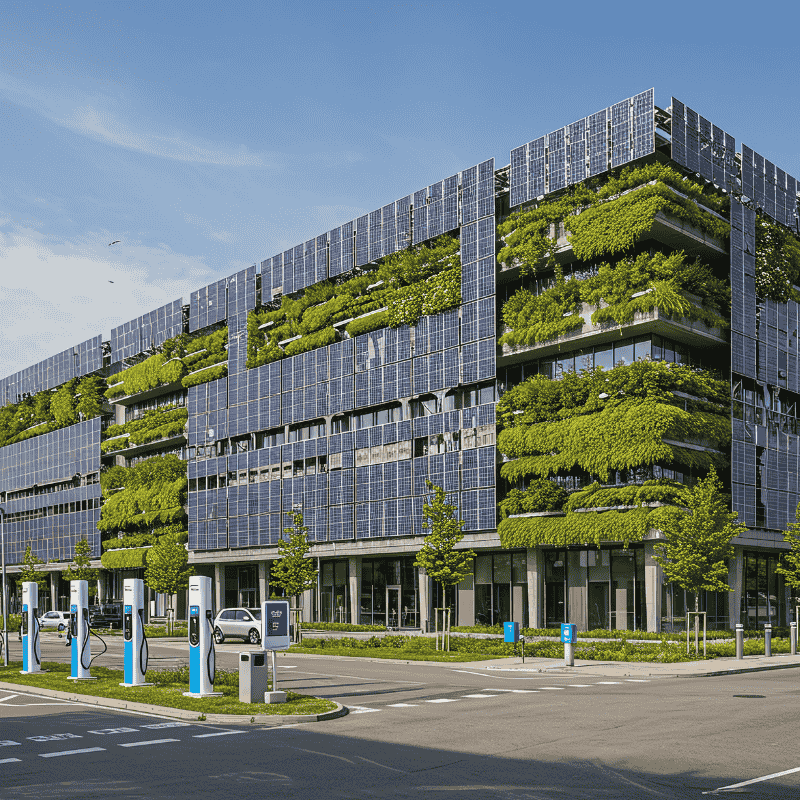A Cool Revolution Without Power
India is heating up—literally. With record summer temperatures and soaring demand for air conditioning, the traditional solution (just plug in a bigger AC) is becoming unsustainable. That’s where electricity-free cooling comes in. New technologies now let buildings stay cool without consuming additional power, and India is fast becoming a hotspot of this green innovation.
This shift is a game-changer for sustainability, energy policy, green construction, and for marketers/techies looking for the next big opportunity.

1. Why Electricity-Free Cooling Matters
- Massive energy demand: India’s cooling demand is expected to grow nearly eight-fold by 2038, and could account for up to 45% of peak electricity load in some areas.
- Grid stress & blackouts risk: Traditional ACs place heavy load on the grid, especially during heatwaves.
- Sustainability urgency: Reducing energy consumption means fewer greenhouse emissions, aligning with global climate goals.
- Commercial opportunity: This isn’t just tech for nerds—varying reports project a billion-dollar industry emerging from these techs in India.
In short: cooling is no longer just comfort—it’s a strategic tech frontier.
2. How Does Electricity-Free Cooling Work?
At its core, the technology uses passive cooling methods—think reflective coatings, radiative cooling materials, and building envelope design—to reduce temperature without active power use.
- Reflective coatings applied to roofs/walls/glass reflect solar radiation and emit heat into the atmosphere instead of absorbing it.
- Radiative cooling materials operate by leveraging the “atmospheric window” – letting heat escape into space while rejecting solar input.
- Applied on existing buildings too (retrofits) — making the solution scalable in India’s huge construction & real-estate sector.
So it’s not about fancy new ACs — it’s about re-thinking surfaces, materials and passive design.
3. GEO Optimization: Where in India This is Happening
This tech finds fertile ground in India for several reasons: hot climate, construction boom, need for affordable cooling. Key regional hubs:
- Pune / Maharashtra: strong building-materials sector and green-tech labs.
- Hyderabad / Telangana: growing infra + supportive policy for green building.
- Metro & Tier-2 cities where retrofits are easier and cost savings matter most.
If you’re writing or marketing on this trend, GEO keywords matter:
“electricity-free cooling India”, “passive cooling roofs Pune”, “green building cooling Hyderabad”.
This GEO angle helps your content show up for both national + local searches.
4. SEO + AEO: Making Your Content Stand Out
This topic requires two angles:
- SEO: Use keywords like “electricity-free cooling”, “passive cooling technology India”, “green tech cooling solutions”.
- AEO (Answer Engine Optimization): Because people using voice search or AI assistants might ask:
“What is electricity-free cooling?”
“How can India reduce AC power by passive cooling?”
Craft headings as questions, answer them clearly, include FAQ sections, and use structured data (FAQ schema) if you can. This increases chances of being picked up by AI-driven search tools.
Also include tags and internal links to related topics (green tech, sustainability, building materials) so Google + AI bots better understand context.
5. What It Means for Businesses & Professionals
For real-estate & construction businesses:
- Offer cooling solutions that reduce power bills and appeal to green credentials.
- Use “electricity-free” as a differentiator in marketing (eco-friendly, cost-saving, future-proof).
For tech / materials manufacturers:
- Invest in new coatings, films, and passive cooling tech supply chain.
- Position for export and Indian market boom.
For marketers, writers & digital pros:
- This trend is content gold: blog posts, case studies, product pages.
- SEO opportunity around “green cooling India”.
- Social & video content showing “how to retrofit your roof for passive cooling” will attract interest.
For job-seekers/technicians:
- Emerging roles in R&D, installation, material production, retrofit consultancy.
- Skills in green building certification, passive design, sustainability will be valuable.
6. Challenges & What to Watch
While exciting, the path isn’t smooth:
- Initial cost & education: Builders and homeowners might resist due to unfamiliarity with new tech.
- Materials & manufacturing scale: To become mainstream, supply chain must mature.
- Retrofit complexity: While retrofits are possible, they still involve building access, materials, and time.
- Standards & certification: Need for industry standards, lab testing, proven performance data.
So any blog should address both the promise and the practical barriers.
Frequently Asked Questions (FAQ)
Q1. What is electricity-free cooling technology?
Electricity-free cooling relies on passive techniques (reflective coatings, radiative cooling materials, passive design) to reduce heat absorption/accumulation without using active power-driven systems.
Q2. How much energy can it save?
Trials in India have shown up to 20-25% electricity savings when retrofitting coatings on buildings.
Q3. Can it be applied in existing buildings?
Yes — many technologies are designed for retrofit (walls, rooftops, glass façades) making them viable for existing structures.
Q4. Why does it matter for India specifically?
Because India faces rapid cooling demand growth, heatwaves, infrastructure strain, and need for sustainable solutions — making this tech particularly suited for the Indian market and climate.
Conclusion: The Future Looks Cooler
“Electricity-free cooling” may sound futuristic, but in India it’s already here and now. With heat clinching and energy bills rising, passive cooling tech offers a win-win: comfort for people and relief for grids.
For marketers, tech professionals, and green-business builders, this is a breakout topic. Whether you’re creating content, building a business, or just curious about where tech meets sustainability — this trend is worth diving into.
India isn’t just adopting greener cooling — it’s innovating it.
And if you write about it, market it right, you’ll be ahead of the curve when the world catches up.

